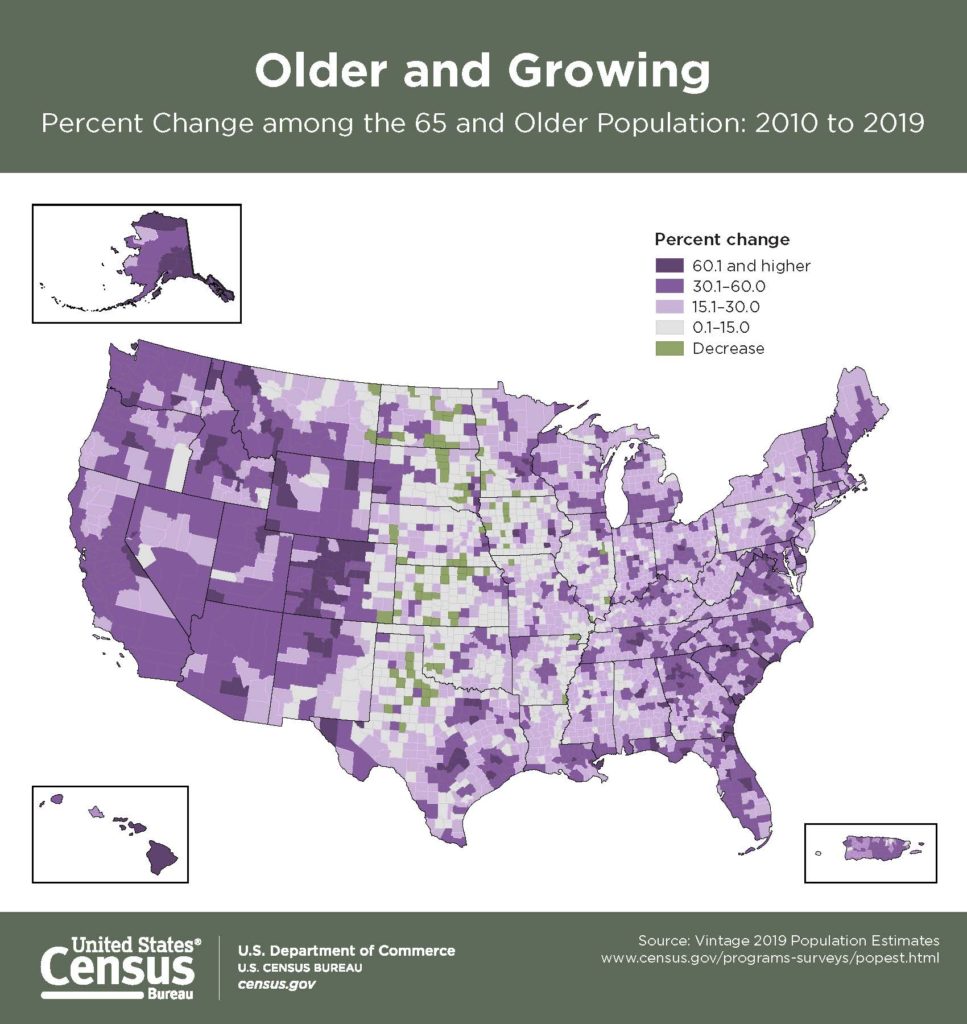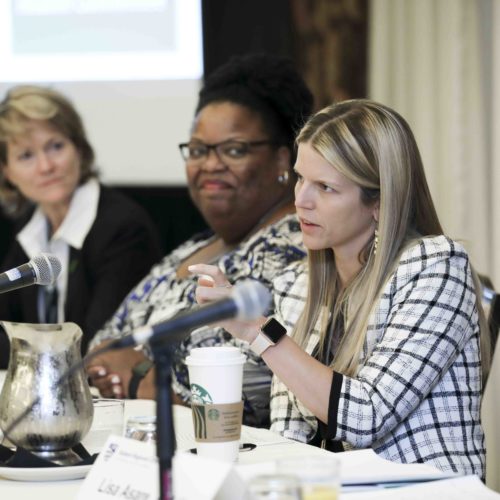Age-friendly states respond to changing demographics
This article appears in the 2021-22 edition of Perspectives.
Our state populations are getting older. The number of U.S. adults aged 65 and older was approximately 50 million in 2019 and is expected to grow to almost 95 million by 2060, according to the U.S. Centers for Disease Control and Prevention. During the past decade, CSG East member states, territories, and provinces have experienced significant increases in the number of older adults in their populations. According to some rankings, the CSG East region includes 10 of the 12 oldest jurisdictions in the United States.

Credit: Vintage 2019 Population Estimates
www.census.gov/programs-surveys/popest.html
As this trend continues in both urban and rural areas, policymakers will be challenged to address the needs of this new demographic. A recent study from AARP found that 76 percent of older Americans wanted to live in their current home or another one in the community as long as they could, although more than half felt they could not afford to do so. Many older adults, especially in rural areas, may be poor and have complex health problems that are affected by “social determinants of health” — which refer to the economic and social conditions in the places where people live and work that influence health risks and outcomes. Examples include lack of adequate housing, food insecurity, and transportation challenges.
The opportunity
Although it is well documented that older adults contribute socially and economically to society long after retirement, their contributions are often overlooked. Older adults purchase goods and services, volunteer, mentor, donate to charity, look after grandchildren, serve as caregivers for family and neighbors, and provide support to others in the community. Governments are becoming increasingly aware that they need to better serve their older constituents by investing in “age-friendly communities.” These communities aim to enhance the health, independence, and well-being of older adults, and in doing so, have the added benefit of reducing the costs of their health care and other services.
A framework for change
The AARP Network of Age-Friendly States and Communities uses a model created by the World Health Organization to provide opportunities for states, territories, and communities to address the aging demographic. According to this model, creating environments that are truly age-friendly requires action in many sectors: health, long-term care, transport, housing, labor, social protection, information, and communication. It also calls for action among multiple levels of government, and by service providers, civil society, older people and their organizations, families, and friends.
All of CSG East’s member jurisdictions participate in at least one age-friendly initiative. During the 2021 virtual CSG East Annual Meeting in August, officials from New York (designated AARP’s first age-friendly state), the U.S. Virgin Islands, and Ontario discussed their efforts to develop and implement policies and programs to better serve their older populations.
CSG East members are also participating in the Age-Friendly Health Systems initiative, a program of the Hartford Foundation, the Institute for Healthcare Improvement, the American Hospital Association, and the Catholic Hospital Association of the United States. Age-Friendly Health Systems demonstrate a core commitment to integrating into their care the “four M’s”: a focus on what matters; ensuring medication safety; enhancing mobility; and addressing mentation, or mental activity.
Investments in the policies and programs that foster the health and well-being of older adults are wise investments for all of society. The CSG East Health Committee will facilitate the sharing of age-friendly actions taken by members, provide information, and sponsor future forums and discussions.





